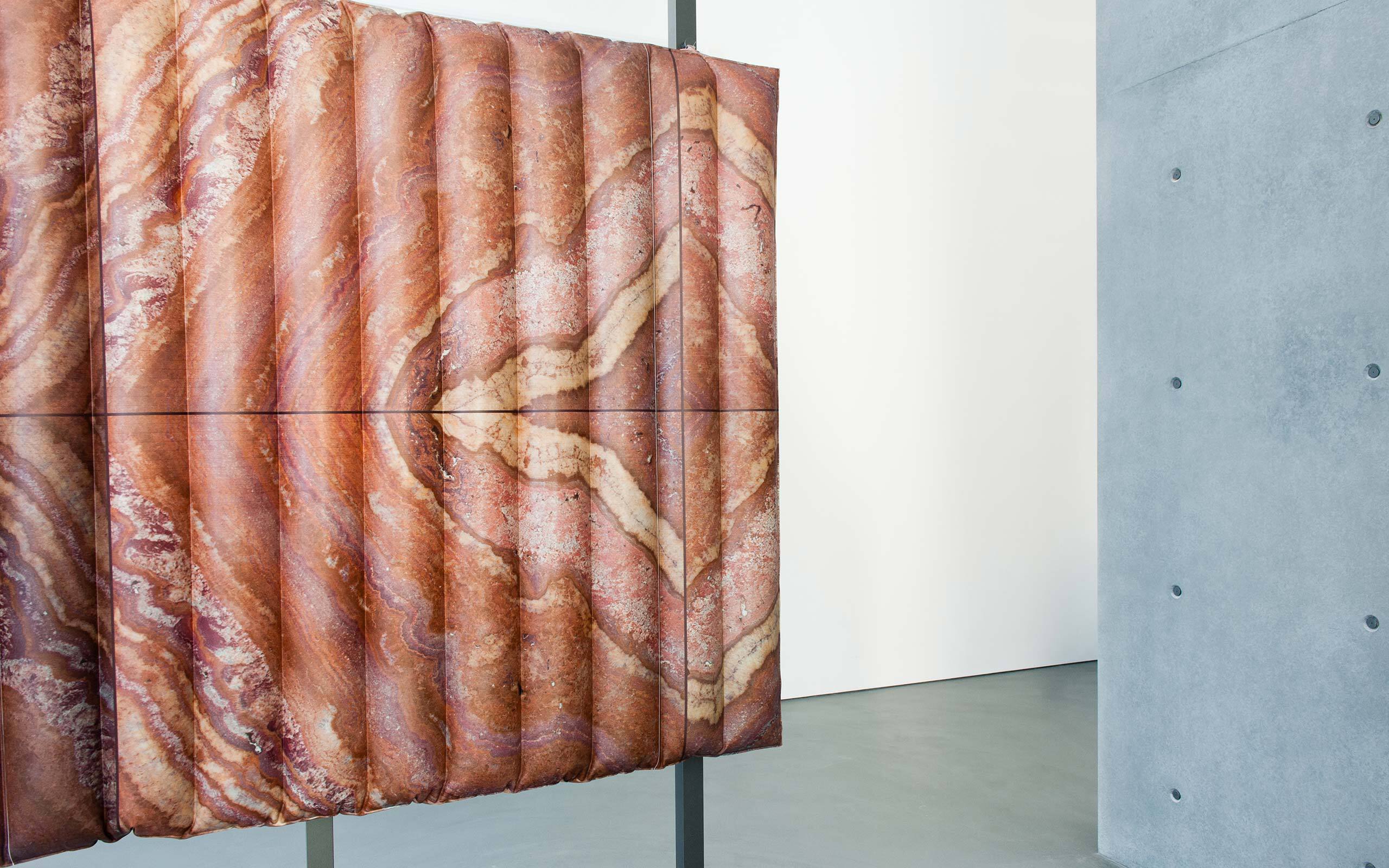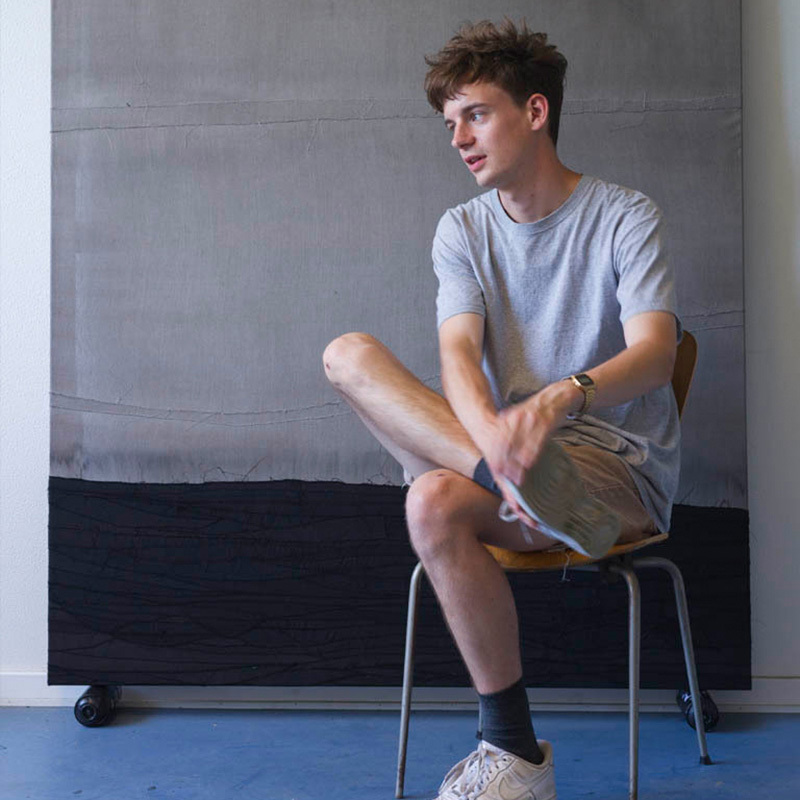Souvenir [Onyx] ist eine aufblasbare Replik der charismatischen Onyx-Wand im Maßstab 1:4, dem architektonischen Hauptelement des Deutschen Pavillons von Mies van der Rohe in Barcelona.
Anlässlich einer Ausstellung La muntanya mágica (Magic Mountain) in der Fundació Joan Miró untersuchte Lúa Coderch 72 Tage lang unter anderem die historische Entwicklung von Barcelona und die Materialität geschichtlicher Ereignisse.
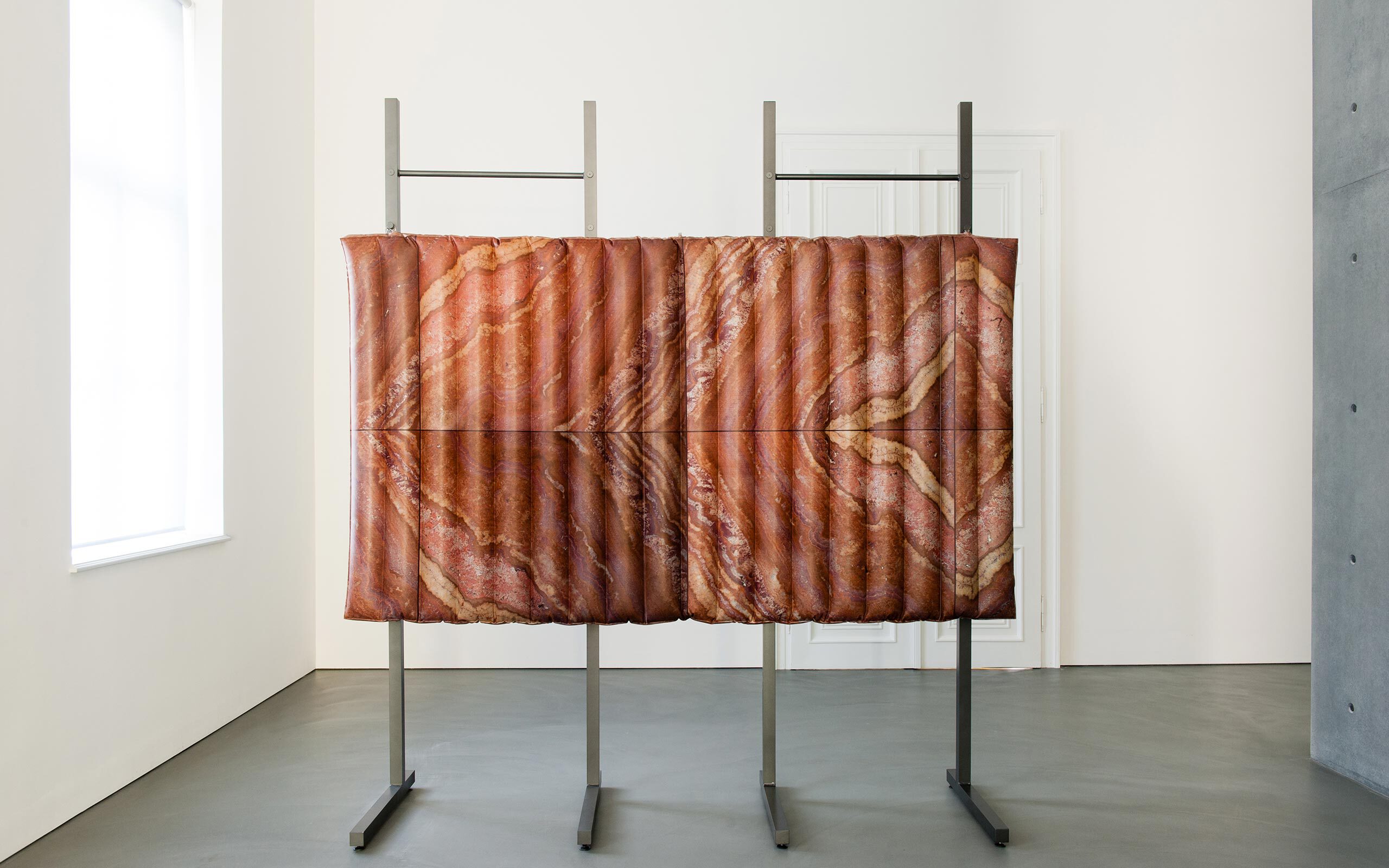
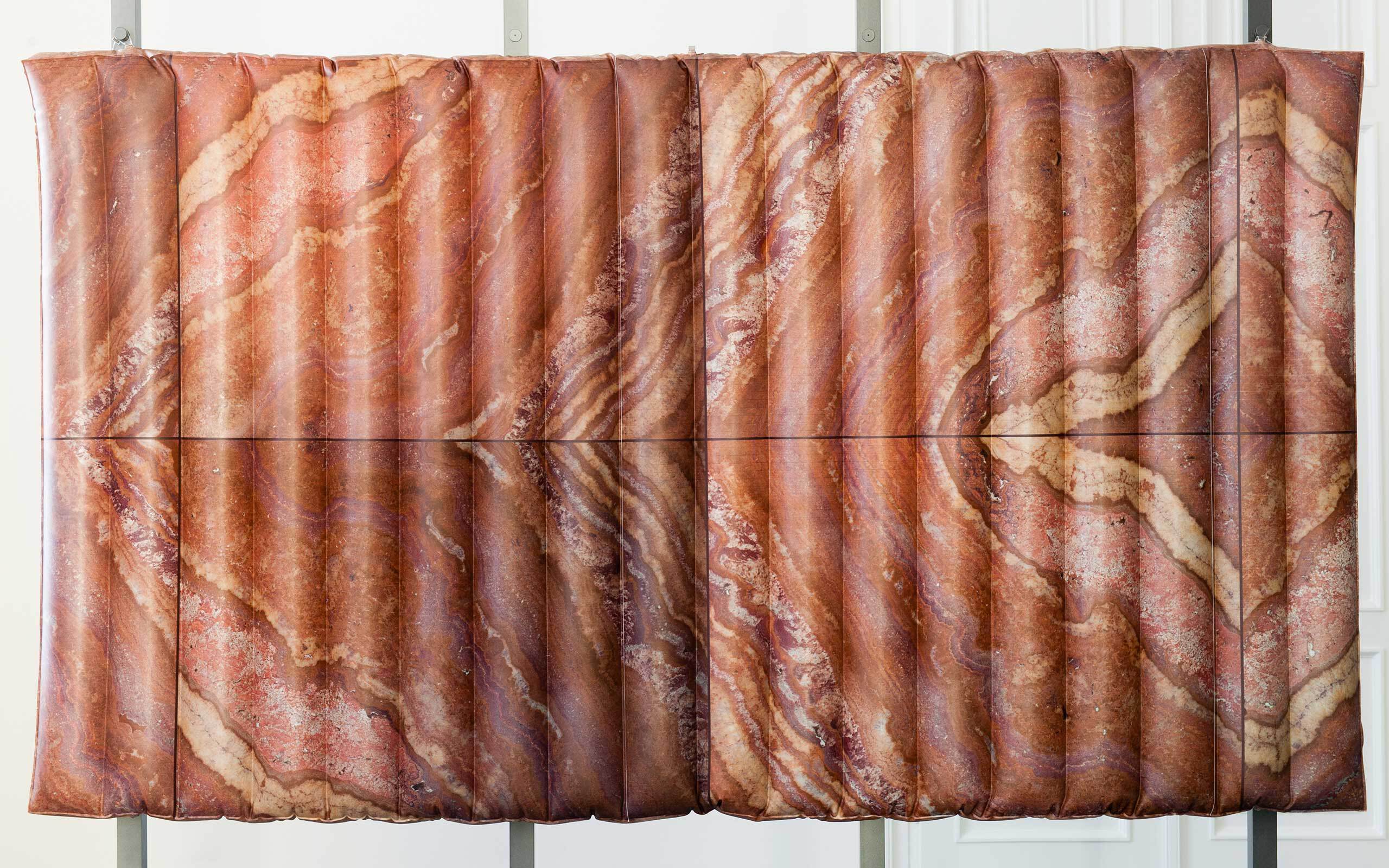
Nachdem der Mies van der Rohe Pavillon 1930 abgerissen worden war, beschloss Barcelona 1986, ihn als Architekturikone und Touristenattraktion neu zu errichten – ein Versuch, Erinnerungen an das Franco-Regime hinter sich zu lassen und demonstrativ an das internationale Zeitgeschehen anzuknüpfen. Die Originalbaupläne waren im Zweiten Weltkrieg verloren gegangen. In Folge dessen konnte der Pavillon nur anhand von Archivfotos nachgebaut werden. So empfindet die Künstlerin, dass den Pavillon heute eine geisterhafte Aura umgibt.
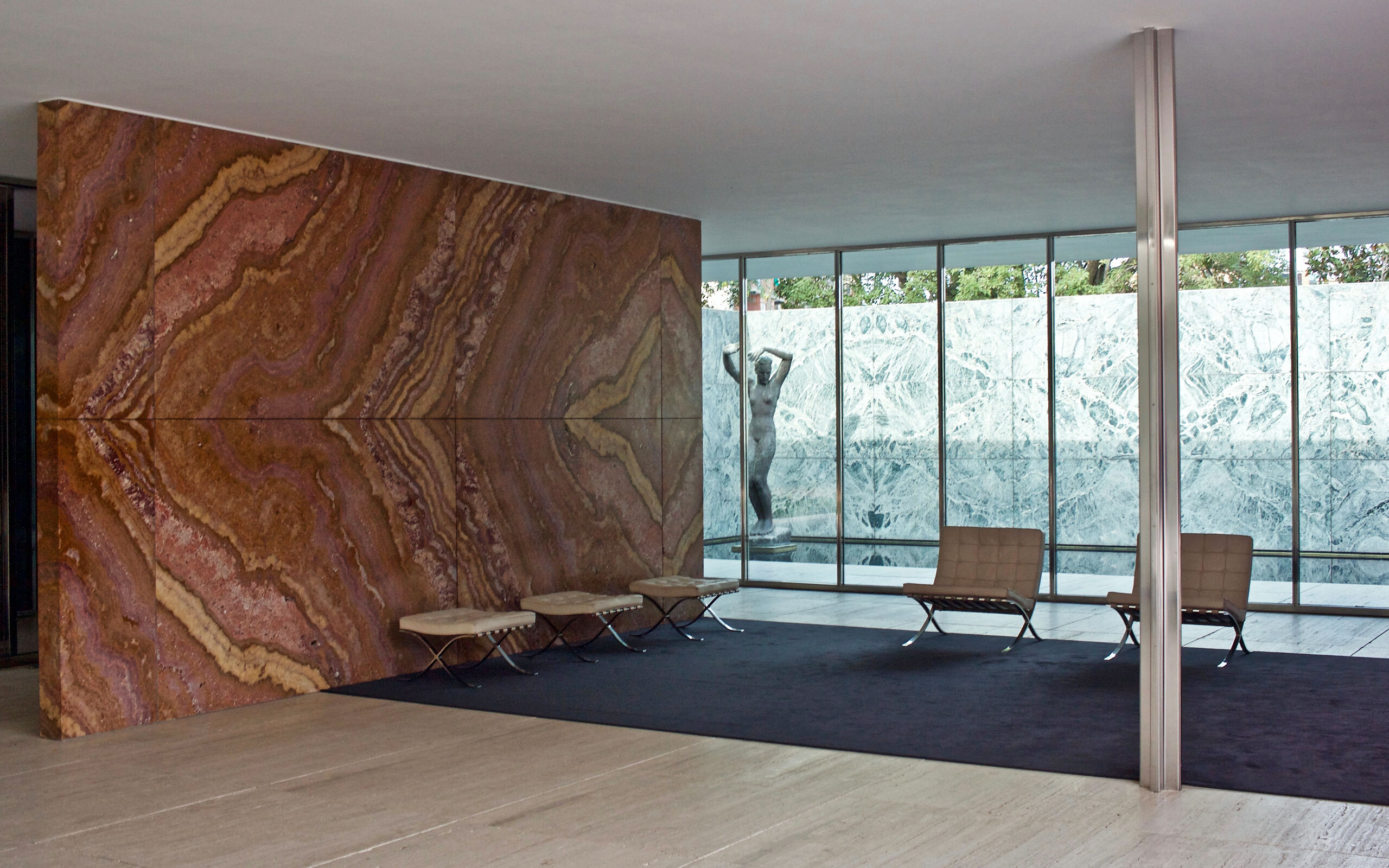
(c) Naotake Murayama
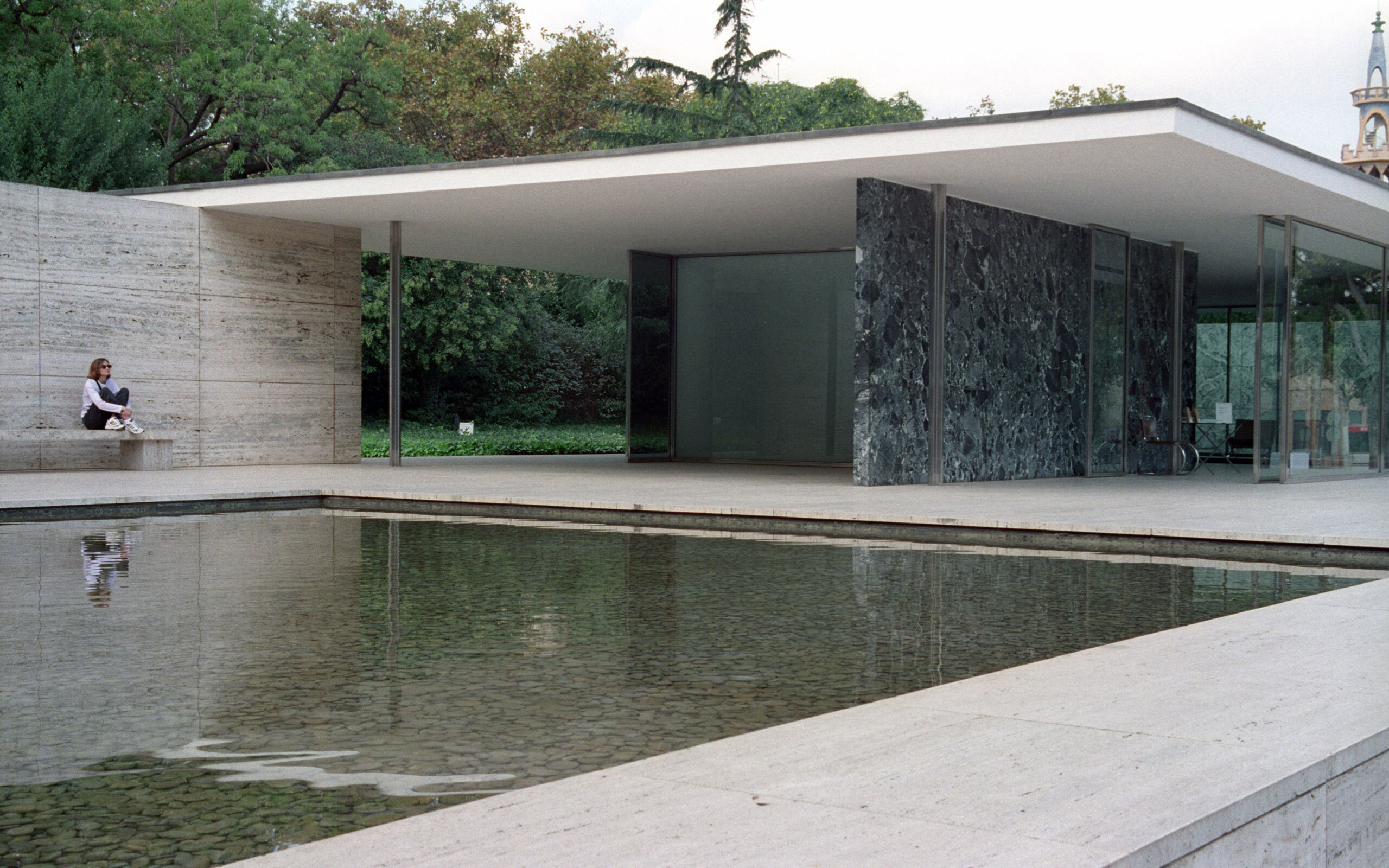
(c) Marc Teer
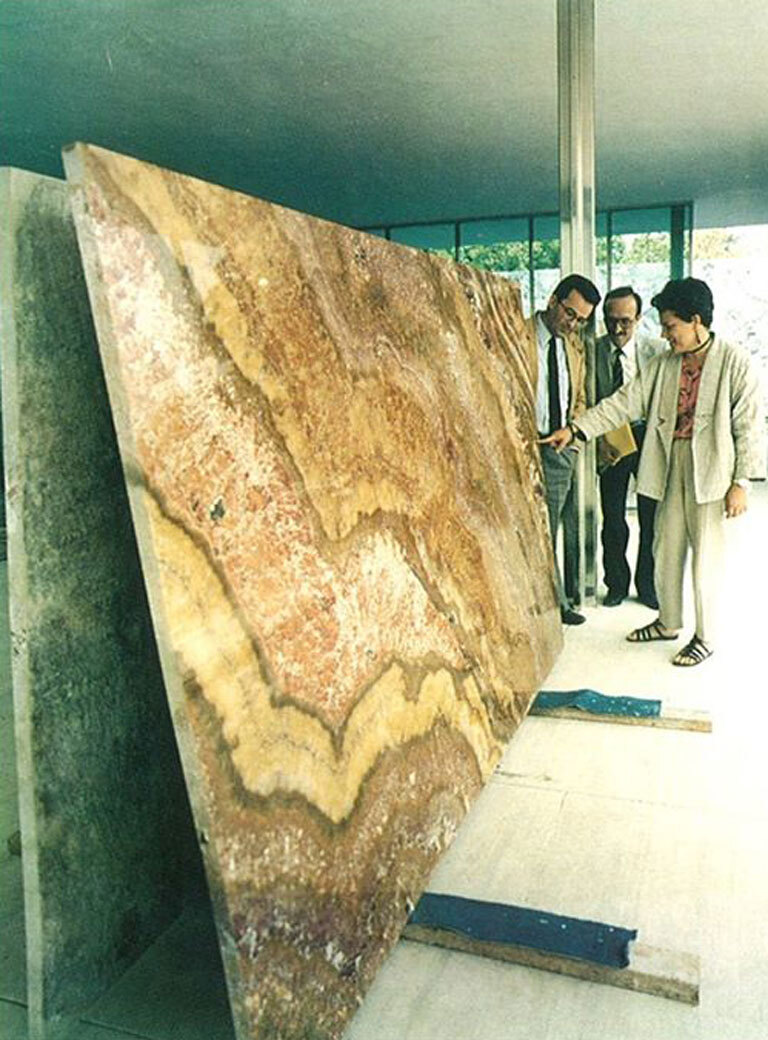
Die verformbare Eigenschaft der aufblasbaren Skulptur aus PVC verkörpert für Lúa Coderch die Relativität von Zeit und Geschichte, und bringt die manipulative Absicht hinter dem Neuaufbau zum Ausdruck. In Zusammenarbeit mit der Künstlerin und dem Architekturmagazin 100 Häuser ist Souvenir [Onyx] als Edition entstanden, die im Palais Rasumowky in Wien ausgestellt wurde, sowie später nochmals anlässlich eines Architektursymposiums zum Thema Stein als Baustoff bei Breitwieser Stoneworlds gezeigt wurde.
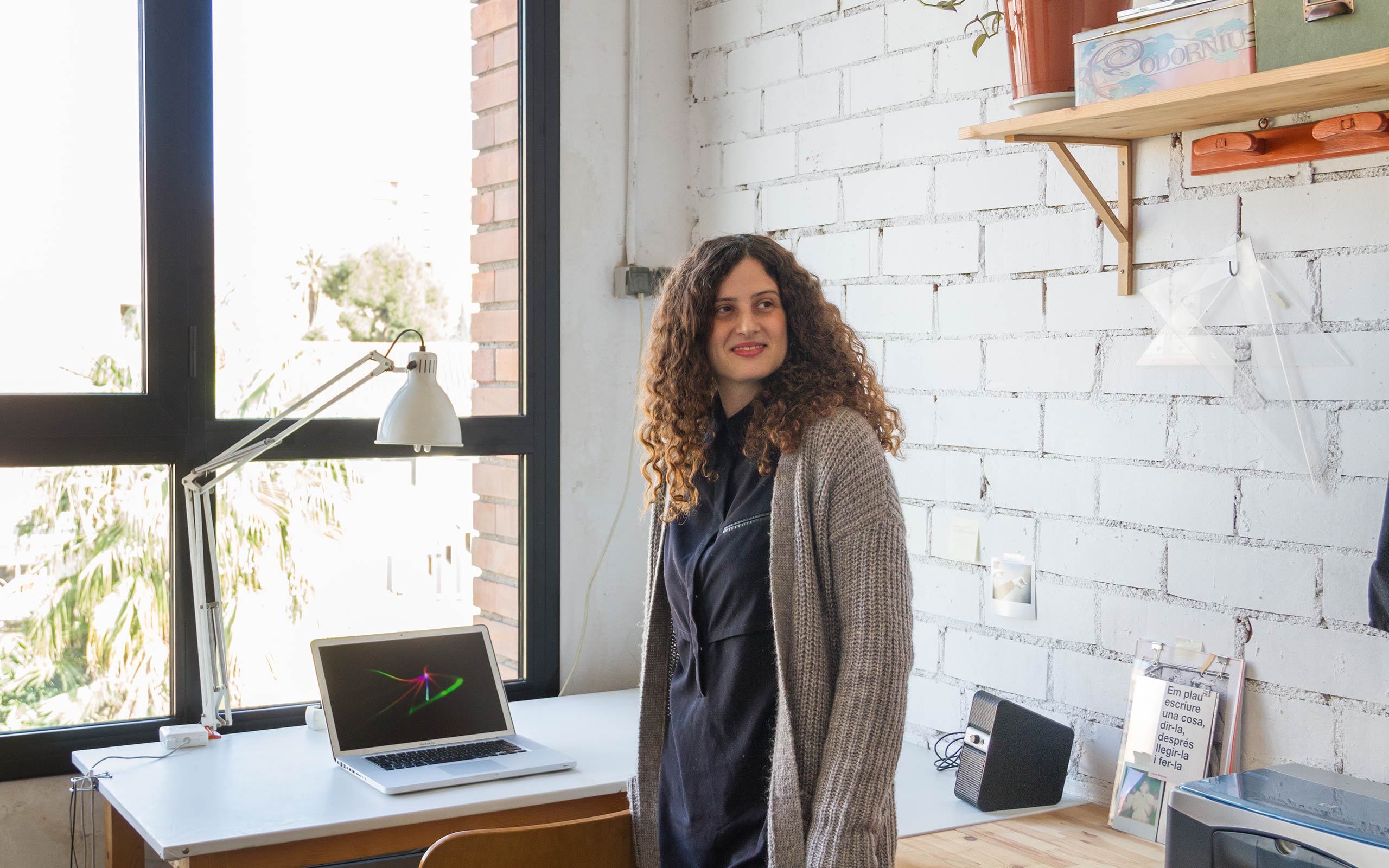
(c) Florian Langhammer
Lúa Coderch (*1982 in Iquitos, Peru) lives and works in Barcelona. Using research not to become an expert on a particular topic, her work explores the surface of things and the materiality of personal and historical narratives. Both things and anecdotes keep appearing once and again as characters in a narrative that arises from the stringing of her different projects. Using a wide range of media and strategies, she asks about the aesthetic aspect of topics like sincerity, enthusiasm, value or deception.
In 2014, Lúa Coderch exhibited at the Miró Foundation The Magic Mountain. Her work was a narrative in 72 chapters, extended along the 72 days of the exhibition around the idea of historical present, and on the tyranny of constantly having to define your expectations. She reflected on the location of the Foundation, the Montjuïch mountain, a very touristic enclave and a never-ending resource to produce discourse and imaginary: it is where the 1992 Olympics took place and the International Exhibition of 1929, where the Mies van der Rohe Pavilion was installed.
Her solo shows include Night in a Remote Cabin Lit by a Kerosene Lamp (Galería Angels Barcelona, 2015), Gold (Suñol Foundation, Barcelona, 2014), La parte que falta (Galería Bacelos, Madrid, 2014) and The Magic Mountain (Espai 13, Joan Miró Foundation, Barcelona, 2013-14). Her group shows include Especies de Espacios (MACBA, 2015-16), ¿Por qué no lo llamas entropía? (Encuentro de Cultura Contemporánea de Guadalajara, México, 2015), The World of Interiors (The Green Parrot, Barcelona, 2014) and The future doesn't wait (La Capella, BCN Producció, 2014). In 2016 she will present the video project Shelter, promoted by BBVA Foundation. Lúa Coderch is represented by Àngels Barcelona gallery.
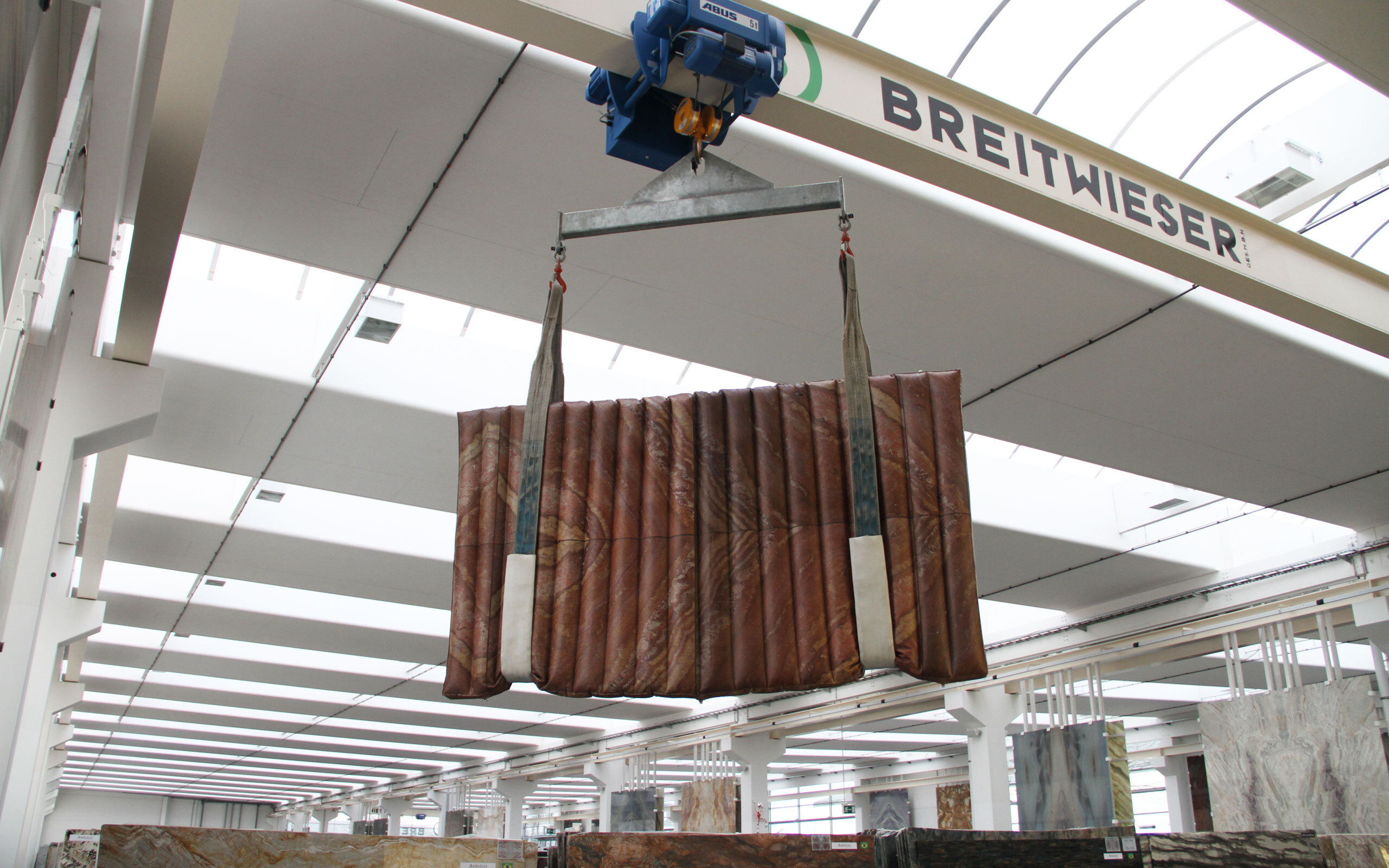
Souvenir [Onyx], 2016 von Lúa Coderch installiert in den Breitwieser Steinwelten, Tulln (AT); (c) Florian Langhammer
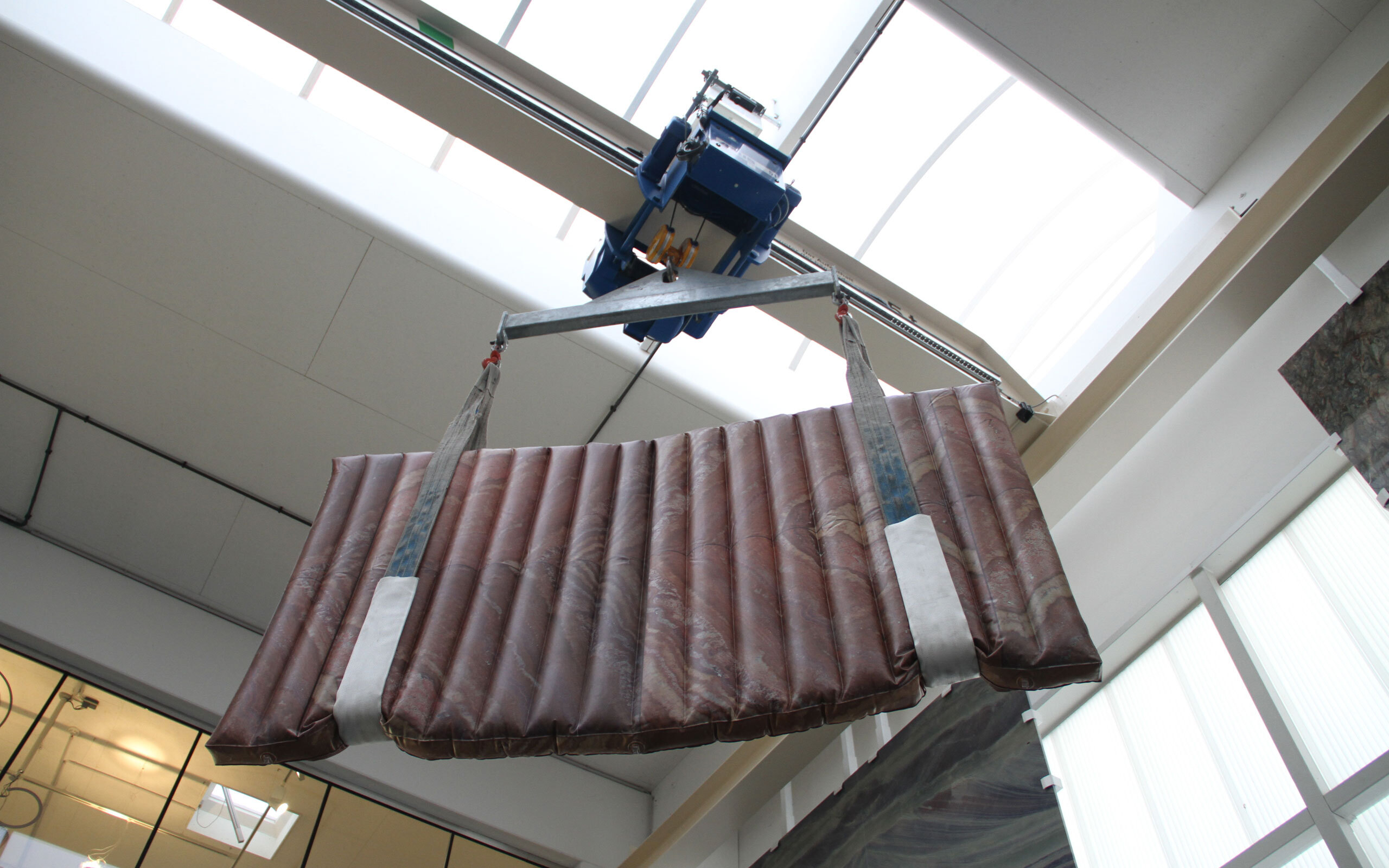
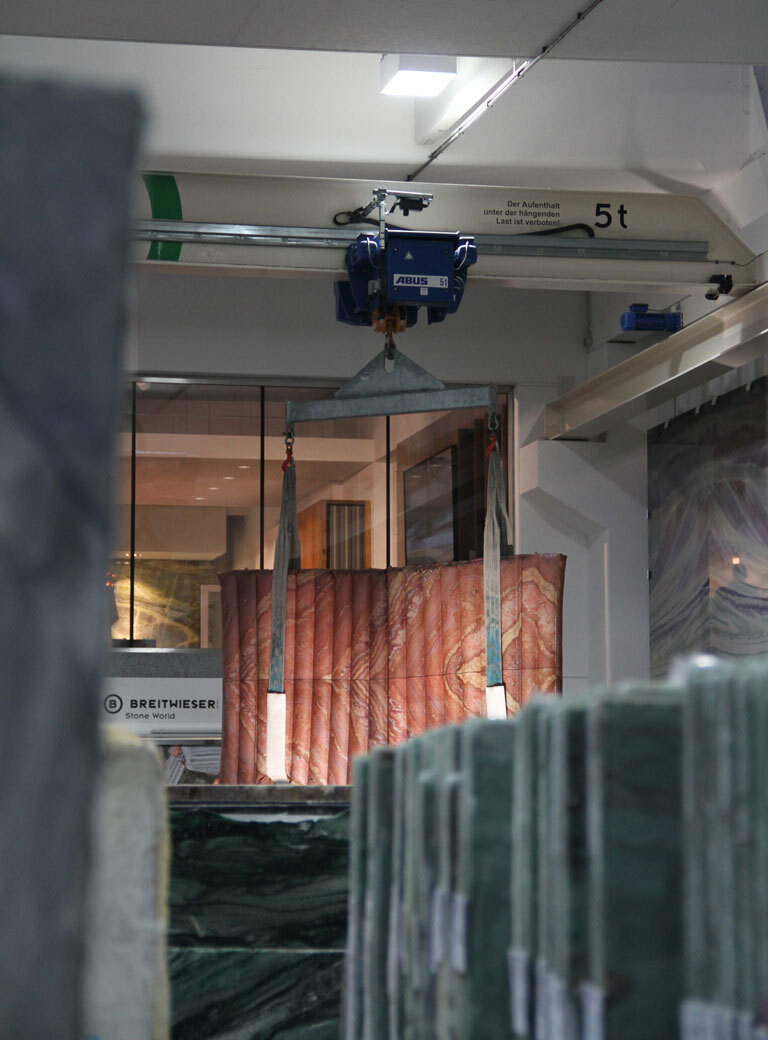
Text: Florian Langhammer
Fotos: Christoph Liebentritt, sofern nicht anders angegeben
Links:
Palais Rasumowky
Breitwieser Stoneworlds
100 Häuser


